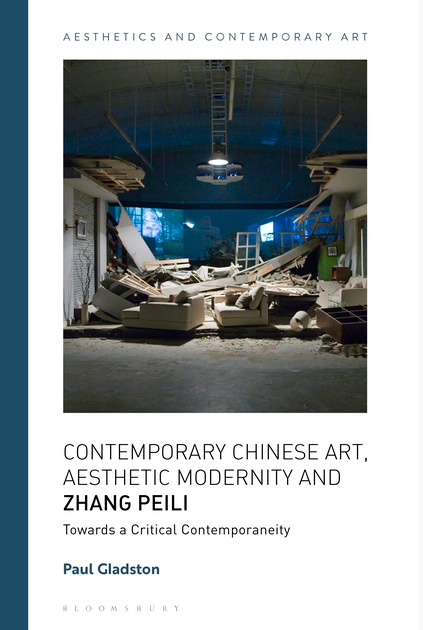
Contemporary Chinese Art, Aesthetic Modernity and Zhang Peili
Towards a Critical Contemporaneity
Bloomsbury Publishing
Published: 17-10-2019
9781350041974
Abstract
n recent decades the previously assumed dominance within the international art world of western(ized) conceptions of aesthetic modernity has been challenged by a critically becalming diversification of cultural outlooks widely referred to as ‘contemporaneity’. Contributing to that diversification are assertions within mainland China of essential differences between Chinese and western art.
In response to the critical impasse posed by contemporaneity, Paul Gladston charts a historical relay of mutually formative interactions between the artworlds of China and the West as part of a new transcultural theory of artistic criticality. Informed by deconstructivism as well as syncretic Confucianism, Gladston extends this theory to a reading of the work of the artist Zhang Peili and his involvement with the Hangzhou-based art group, the Pond Association (Chi she). Revealed is a critical aesthetic productively resistant to any single interpretative viewpoint, including those of Chinese exceptionalism and the supposed immanence of deconstructivist uncertainty.
Addressing art in and from the People’s Republic of China as a significant aspect of post-West contemporaneity, Gladston provides a new critical understanding of what it means to be ‘contemporary’ and the profound changes taking place in the art world today.
Table of contents
Acknowledgements
Introduction
Prolegomenon
1. Critical Art and Aesthetics within China and EuroAmerica before Modernism
2. Modernisms within and outside China
3. Postmodernisms and Contemporaneity within and outside China
4. Case Study: The Work of Zhang Peili and the Pond Association (Chi she)
Conclusion: Towards a Critical Contemporaneity
Notes
Bibliography
Index
Reviews
“From the painstaking walk-through of theoretical issues and historical/cultural context appearing in his Prolegomenon, through the concise yet bracing conclusion, Paul Gladston’s study of Zhang Peili and contemporaneity is far more than a mere biographical sketch of a single artist; it is a treatise on visual art of the present and China’s particularized presence in that sphere. It is a landmark work both in terms of cultural-criticism and art-historical analysis.” – Paul Manfredi, Professor of Chinese, Pacific Lutheran University, USA
“Contemporary Chinese Art, Aesthetic Modernity and Zhang Peili is an important contribution to a critical discourse on contemporary art in the global context. Reading artworks by Zhang Peili through post-Enlightenment, poststructuralist as well as Neo-Confucian, Daoist and Zen-Buddhist lenses the author not only sheds light on multiple and entangled histories and epistemologies of Chinese art but also convincingly argues to conceive of contemporary art in general as constituted transculturally.” – Birgit Hopfener, Associate Professor of Art History, Carleton University, Canada
“Gladston has taken the example of a single artist to anchor reflections on issues of immense contemporary importance, in particular the diversity of cultural histories that lead to the richness of global aesthetic positions. His scholarship actively helps to rescue cultural knowledge at risk of disappearing due to the lack of suitable academic platforms.” – Johnson Chang, Curatorial Director, Hanart TZ Gallery, Hong Kong
“While emphasizing that our understanding of what is specific to China may be analysed with notions originating as much from China as from the West, the main strength of Gladston’s book, particularly obvious in its ambitious prolegomenon, is to elucidate the idea of contemporaneity in the present debate about Chinese art.” – Frank Vigneron, Professor and Chairperson, The Chinese University of Hong Kong, Hong Kong
“With its judicious application of critical theory, the book will be essential reading for a better understanding of contemporary Chinese art and visual culture in the global contexts.” – Jason C. Kuo, Professor of Chinese Art, University of Maryland, USA
The author
Paul Gladston is the Judith Neilson Professor of Contemporary Art at the University of New South Wales, Australia and was previously Professor of Contemporary Visual Cultures and Critical Theory at the University of Nottingham, UK. His recent book-length publications include Contemporary Chinese Art: A Critical History (2014), which received ‘publication of the year’ at the Award of Art China 2015. He was founding principal editor of the peer-reviewed Journal of Contemporary Chinese Art from 2014 to 2017 and an academic adviser to the internationally acclaimed exhibition Art of Change: New Directions from China staged at the Hayward Gallery-South Bank Centre London in 2012.

